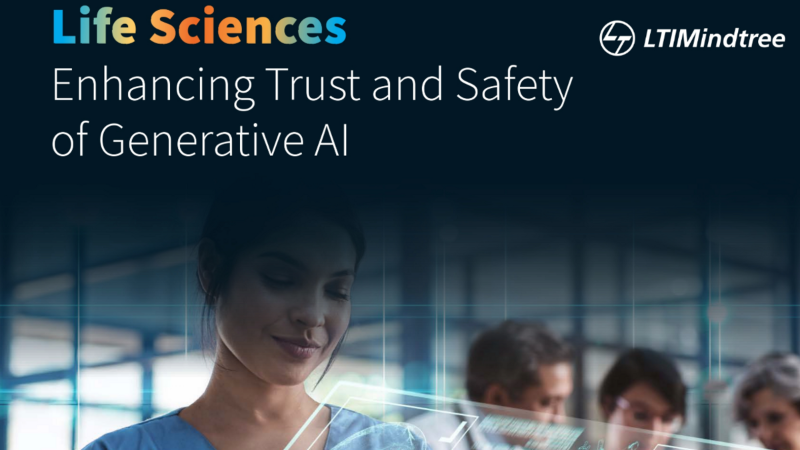Enhancing Trust and Safety in Generative AI for Life Sciences
Published on 22 Apr 2025

Generative AI in Life Sciences: Building Trust, Ensuring Safety, and Driving Innovation
As generative AI continues to advance, its potential in the life sciences sector is transformative—unlocking value in everything from biomedical content creation and SOP generation to semantic search and clinical decision support. But in a domain where the stakes are high and precision is paramount, the adoption of Gen AI must be tempered by a deep focus on trust, safety, data privacy, and scientific accuracy.
LTIMindtree’s latest Point of View whitepaper, "Enhancing Trust and Safety of Generative AI in Life Sciences," addresses these concerns head-on. It provides a framework for integrating Gen AI responsibly—ensuring that innovation never comes at the cost of compliance, credibility, or care.
Understanding the Risks: From Data Privacy to Output Integrity
While Large Language Models (LLMs) are adept at producing human-like content, they remain black-box systems—often generating fluent responses without guaranteed accuracy or transparency. In the life sciences context, even minor hallucinations or misclassifications can have critical consequences for patient safety, regulatory adherence, and public trust.
The whitepaper explores risks such as:
-
Potential data breaches from open-source LLMs
-
Inability to trace AI-generated claims back to source
-
Misclassification of biomedical entities due to lack of contextual knowledge
-
Variability in AI output despite identical inputs
To overcome these, LTIMindtree recommends structured monitoring, domain-specific tuning, and robust governance frameworks.
LTIMindtree’s Trust-Centered Approach to Generative AI
LTIMindtree offers a multi-layered approach to secure, high-integrity AI adoption for life sciences enterprises. Key components include:
-
Output Monitoring: Leveraging NLP and deterministic AI rules to verify LLM outputs against domain knowledge
-
Claim Verification & Quality Gates: Measuring scientific factuality, contextual alignment, and coherence
-
Knowledge Graphs: Embedding biomedical ontologies and relationships to improve AI reasoning and accuracy
-
Retrieval-Augmented Generation (RAG): Grounding responses in verifiable source data to reduce hallucination risk
-
Human-in-the-loop Oversight: Ensuring expert validation where it matters most
These measures not only improve AI accuracy but enhance auditability, traceability, and explainability—essentials in any regulated industry.
Data Privacy and Security by Design
A major concern with Gen AI in healthcare is the handling of sensitive data, including patient records and proprietary research. LTIMindtree’s Canvas.ai platform addresses this through:
-
Advanced data redaction and obfuscation
-
Moderation of over 50 data formats to detect PII and PHI risks
-
Restriction of sensitive data exposure to public LLMs
-
Risk scoring models based on contextual relevance and usage
This safeguards enterprise data while allowing legitimate internal access for AI-driven use cases.
Conditioning LLMs for Domain-Specific Tasks
To increase Gen AI performance in biomedical applications, LTIMindtree supports:
-
Prompt Engineering: Using pre-validated templates and chain-of-thought techniques for SOP summarization, literature review, and clinical Q&A
-
Fine-Tuning: Training vanilla LLMs on domain-specific datasets to improve precision and reduce bias in outputs
From Proof to Practice: Enterprise Success Story
The paper also features a success case where LTIMindtree reduced 70% of duplicate HCP (Healthcare Professional) records using advanced embeddings and language models—an example of real-world impact through trusted AI.
Download the full whitepaper to explore how LTIMindtree helps life sciences organizations harness the power of Generative AI—responsibly, safely, and at scale.
